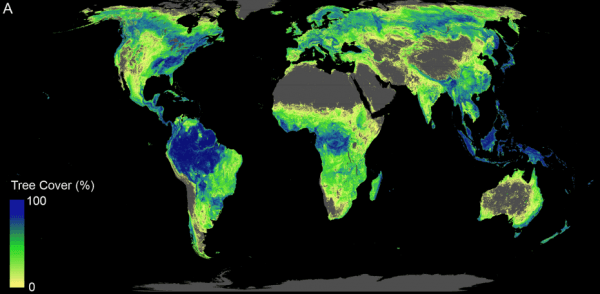The Crowther Lab at ETH Zurich investigates nature-based solutions to climate change. In their latest study the researchers showed for the first time where in the world new trees could grow and how much carbon they would store. Study lead author and postdoc at the Crowther Lab Jean-François Bastin explains: “One aspect was of particular importance to us as we did the calculations: we excluded cities or agricultural areas from the total restoration potential as these areas are needed for human life.”
Reforest an area the size of the USA
The researchers calculated that under the current climate conditions, Earth’s land could support 4.4 billion hectares of continuous tree cover. That is 1.6 billion more than the currently existing 2.8 billion hectares. Of these 1.6 billion hectares, 0.9 billion hectares fulfill the criterion of not being used by humans. This means that there is currently an area of the size of the US available for tree restoration. Once mature, these new forests could store 205 billion tonnes of carbon: about two thirds of the 300 billion tonnes of carbon that has been released into the atmosphere as a result of human activity since the Industrial Revolution.
According to Prof. Thomas Crowther, co-author of the study and founder of the Crowther Lab at ETH Zurich: “We all knew that restoring forests could play a part in tackling climate change, but we didn’t really know how big the impact would be. Our study shows clearly that forest restoration is the best climate change solution available today. But we must act quickly, as new forests will take decades to mature and achieve their full potential as a source of natural carbon storage.”
Read more at: ETH ZURICH
Total land available that can support trees across the globe (total of current forested areas and forest cover potential available for restoration). (Image: Crowther Lab / ETH Zurich)


